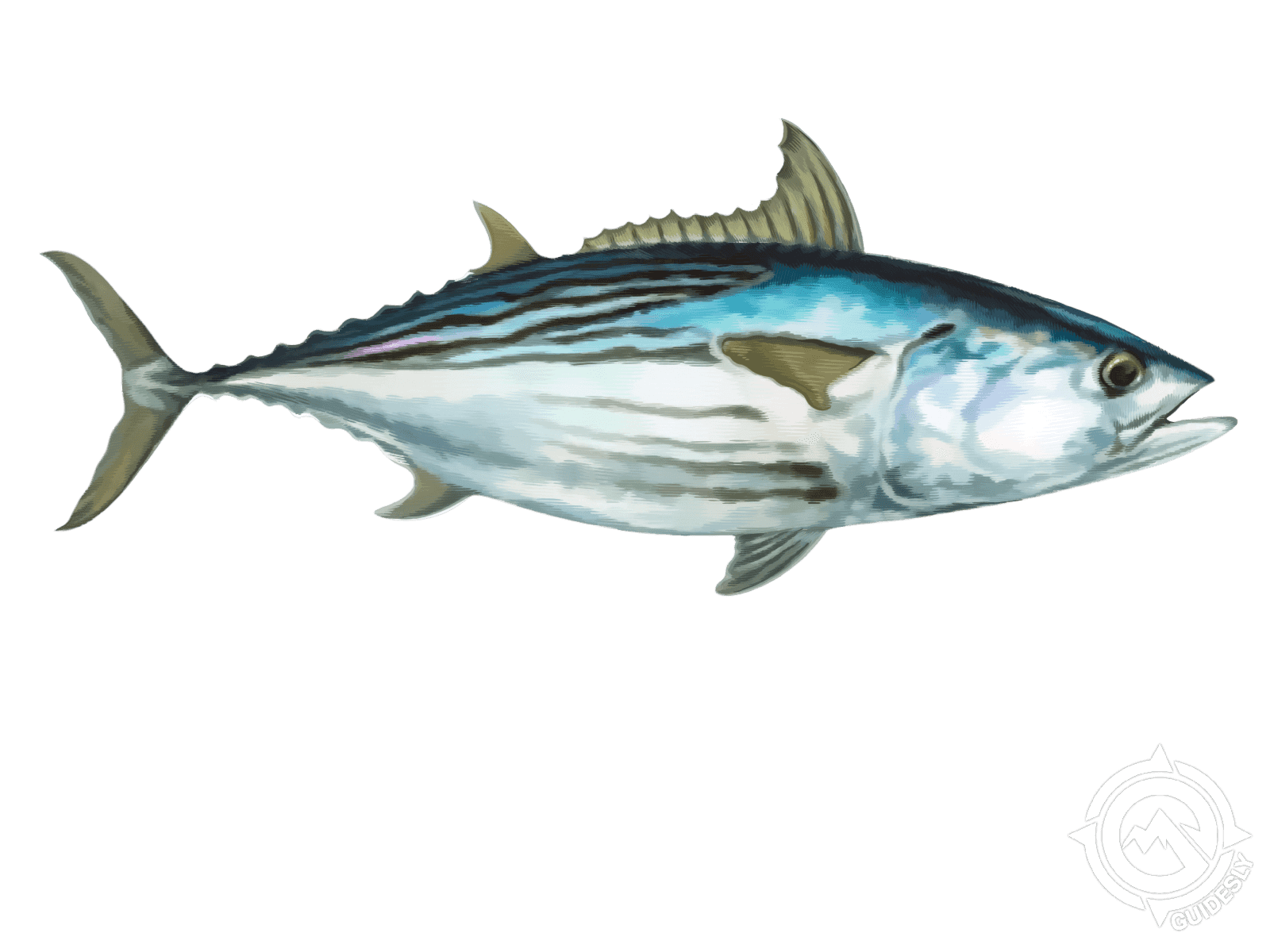Black Skipjack

Species Details
Euthynnus Lineatus
Scombridae
Perciformes
Offshore, Reef, Wreck
16 - 26 lbs.
24" - 33"
Black Skipjack Tuna (Euthynnus Lineatus)
Black Skipjack tuna is a member of the Scombridae family. It has a long slender silver body with a dark blue dorsal fin. From the starting point of the dorsal fin, 5-6 stripes (horizontal) run along their back. Between the pectoral and pelvic fins, few dark spots are present on the body's lower side. They have 33-39 gill rakes.
Black Skipjack Size
They can reach 3 feet in length and 26 pounds in weight.
Black Skipjack Spawning
The majority of spawning occurs in winter and spring, but Black Skipjack Tuna may spawn throughout the year. Spawning takes place near the surface in open water. The ideal water temperature is 60°F to 87°F.
Black Skipjack Interesting Facts
Adult Black Skipjack form schools with the Yellowfin Tuna. However, juvenile Black Skipjack find themselves food for the Yellowfin Tuna. Black Skipjack are used as bait frequently for fish such as Marlin, Cubera Snapper, Big Tuna, Almaco Jacks, Roosterfish, and Sharks.
Black Skipjack Habitat
You can find the Black Skipjack offshore and sometimes in coastal waters. They feed on the near-surface of the water. Skipjack usually swims near the surface at night and can dive down to 850 feet during the day.
Black Skipjack Methods and Baits
This species is a pelagic, schooling, and migratory fish feeding predominantly on small fishes, squids, and crustaceans. It can be hooked by trolling or casting small live baits, or small lures such as spoons, plugs, jigs, and feathers. Black Skipjack will frequently strike any lure trolled at speeds up to 8-10 miles per hour. Black Skipjack Fishing Methods include trolling, drift fishing, chumming, baitcasting, and fly fishing.
Black Skipjack Distribution
They inhabit warm temperate and tropical waters of the Pacific Ocean from central California to Peru, preferring water temperature over 73 degrees. The greatest abundance is seen near the equator. They show seasonal migration in the temperate and tropical waters.







